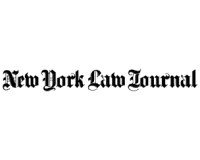Change in Payment Terms Shortly Before Preference Period Insufficient to Establish New Baseline of Dealings for “Ordinary Course of Business” Defense
Sparkman v. Queenscape, Inc. (In re Anderson Homes, Inc.), 2012 WL 5617446 (Bankr. E.D.N.C. Nov. 15, 2012)
In Sparkman v. Queenscape, Inc., the chapter 7 trustee for Anderson Homes commenced an action against Queenscape to avoid and recover certain alleged preferential transfers under Bankruptcy Code section 547. Bankruptcy Code section 547 allows a trustee or debtor in possession to avoid a transfer made by a debtor while insolvent to or for the benefit of a creditor on account of an antecedent debt within 90 days (or one year in the case of an “insider”) of the petition date, where such transfer enables the creditor to receive more than it would have received in a chapter 7 liquidation. The defendant argued that the payments were not avoid- able because they were made in the “ordinary course of business.” Bankruptcy Code section 547(c) states that payments made in the “ordinary course of business” are immune from avoidance. The parties filed cross-motions for summary judgment.
The debtor and the defendant commenced their business relationship in 2005, more than three years prior to the debtor’s bankruptcy filing on March 16, 2009. During the prepreference period relationship, the average time between in- voice and payment was 48.63 days. During the preference period, the average time between invoice and payment increased to 108.88 days. The defendant argued that notwithstanding this deviation, the payments were ordinary because at some point in 2008 (the defendant was unable to provide the exact date) the debtor sent the defendant a letter announcing its intention to extend the payment terms to a 90 day payment schedule.
Nevertheless, the court ruled that the payments were not ordinary. The court noted that a change in payment terms during or immediately prior to the preference period would constitute a significant deviation from parties’ past dealings and this should not be considered when determining the “historical” days to payment baseline. The court explained that for the court to find a change in the ordinary course of business among the parties, the defendant had to demonstrate that subsequent to the “90 day letter,” payment timing actually changed in accordance with the letter and remained consistent through the entire preference period. While the days to payment in- creased to 108.88 days in the preference period, the court noted that the actual deviation in payment took place well after the letter extending the payment terms to 90 days was delivered (the court did not discuss how long after the letter the late payments started). Thus, the court found that the alleged change in payment terms was not sufficient to establish a change in the baseline of dealings between the par- ties so as to make later payments received during the preference period ordinary within the meaning of Bankruptcy Code section 547(c)(2)(A).
COMMENTARY
Practitioners must be aware that when examining the subjective ordinary course of business defense (comparing the dealings between the parties, as opposed to the objective standard, which looks at the industry), changes in payment terms prior to the preference period may affect the de- termination of the baseline period against which preference period payments will be compared. However, changes close to the bankruptcy filing may not be considered in determining the historical baseline of dealings for the purpose of assessing the ordinary course of business defense.
Late Payment Resulting from Corrected Overcharge Not Protected by “Ordinary Course of Business” Defense
Quebecor World Litigation Trust v. All Points Packaging & Distribution, Inc. (In re Quebecor World (USA), Inc.), 491B.R. 363 (Bankr. S.D.N.Y. 2013)
In Quebecor World Litigation Trust v. All Points Packaging & Distribution, Inc., the litigation trustee for the Quebecor World litigation trust sued All Points Pack- aging & Distribution under Bankruptcy Code section 547 to avoid and recover payments the debtor made during the preference period. The defendant argued that the payments were not avoidable because they were made in the “ordinary course of business.” The parties filed cross motions for summary judgment.
The debtors filed the underlying bankruptcy cases on January 21, 2008. Since approximately 2005, All Points supplied the debtors with shrink wrap materials. During the pre-preference period, the debtors paid the defendant’s invoices on (weighted) average 55.44 days from the invoice date. During the preference period, the debtors made a pay- ment on a single invoice in the amount of $67,078.19 ninety one days after issuance of the invoice. At the time of payment, the defendant also issued a credit memo in the amount of $7,920, reflecting an amount the debtors were overcharged. The defendant did not refute the plaintiff’s position that the payment was made over 30 days later than historical payments be- tween the parties. Instead, the defendant argued that the lateness of the payment was justified because the invoice included an overcharge which took time to correct and process.
The court ruled that the single prefer- ence payment at issue was not protected by the ordinary course of business defense under Bankruptcy Code section 547(c)(2) (A) and, thus, was avoidable by the plain- tiff. The court noted that the payment at issue was made over thirty days later than the historical days to payment average. The court further noted that the defen- dant presented no evidence of a history of late payments between the parties or a history of correcting payments. Indeed, the defendant presented no evidence of communications regarding the billing error or a new invoice stating the correct amount. Accordingly, the court found the payment at issue was inconsistent with the parties’ ordinary course of busi- ness and not subject to protection under Bankruptcy Code section 547(c)(2)(A).
COMMENTARY
Practitioners should consider the possible reasons behind a deviation in payments from the prior course of dealing, but re- main mindful that an explanation for a late or early payment will not necessarily deem such payment ordinary. In this case, the court ruled that a late payment allegedly resulting from a relatively small billing error was not protected by the ordinary course of business defense. However, the court may have ruled differently if the defendant was able to establish a history of correcting payments and demonstrate that the billing error actually caused the payment delay.
Court Utilizes Combination of “Average Lateness” and “Bucket” Analysis to Find Payments Fall Outside “Ordinary Course of Business” Defense
Quebecor World Litigation Trust v. R.A. Brooks Trucking, Co., Inc. (In re Quebecor World (USA), Inc.), 491 B.R. 379 (Bankr. S.D.N.Y. 2013)
In Quebecor World Litigation Trust v. R.A. Brooks Trucking, Co., Inc., the litigation trustee for the Quebecor World litigation trust sued R.A. Brooks Trucking under Bankruptcy Code section 547 to avoid and recover payments the debtor made during the preference period. The defendant argued that the payments were not avoidable because they were made in the “ordinary course of business.” The parties filed cross motions for summary judgment.
The debtors filed the underlying bankruptcy cases on January 21, 2008. Defendant provided transportation services to the debtors since approximately 2002. There was no written contract governing the relationship between the debtors and the defendant but invoices stated that payment was due within ten days of receipt of the invoice. The preference payments in question were paid on (weighted) average 57 days from the in- voice date according to plaintiff’s analysis. To establish a baseline of prior dealings between the parties for the purpose of determining whether the preference period payments were made in the “ordinary course of business,” the plaintiff utilized approximately two years of historical data, while Defendant utilized only one year of historical data. Plaintiff’s analysis resulted in a 27.57 weighted average days from invoice to payment and defendant’s analysis resulted in a weighted average of 35 days. The court adopted the longer two year period suggested by the plaintiff because it more accurately reflected the parties’ ordinary course of dealings while the debtors were healthy.
Next, the court examined the appropriate method to compare preference period payments to historical data. Defendant argued for the “total range” method, which considers any preference period payment ordinary if it was paid within the minimum or maximum days to pay during the historical period. The court rejected this range of payments analysis, noting that this theory impermissibly expands the range of “ordinary” transactions because it captures outliers from the historical period that skew the analysis of what is ordinary. Thus, the court rejected this method. Instead, the court considered the “average lateness” method promulgated by the plaintiff, which examines the average time of payment from invoice date and groups the payments in “buckets” by age. The buckets are created by grouping payments into 5 or 10 day intervals and comparing the age buckets to arrive at the full historical range. The plaintiff provided an analysis that separated the historical data into 5 day buckets and set forth the percentage of historical payments in each 5 day bucket. Using this method, the plaintiff did not seek recovery of any payments made between 11 to 35 days from invoice date because more than 80 percent of historical payments were made during this time frame. However, the plaintiff did seek recovery of payments made outside this period, which constituted the majority of the payments made during the preference period, and were paid 46 to 60 days from the invoice date.
The court noted that while some deviation from historical average may be ordinary, a change of this magnitude cannot be considered ordinary. The court concluded that the appropriate ordinary course range was 11 to 45 days and that any payments falling outside this range are not protected by ordinary course of business defense under Bankruptcy Code section 547(c)(2)(A).
COMMENTARY
Practitioners should consider both the average timing of payment and the way payment times cluster to arrive at potential ranges for purposes of determining whether a particular payment was made within the ordinary course of business.
Lack of Intent Bars “Contemporaneous Exchange for New Value” Defense; Delay in Payments and Change in Discount Terms Eliminates “Ordinary Course of Business” Defense
Sparkman v. American Residential Services, LLC (In re Anderson Homes, Inc.), 2013 WL 1279403 (Bankr.E.D.N.C. Nov. 15, 2012)
In Sparkman v. American Residential Services, LLC, the chapter 7 trustee for Anderson Homes commenced an action against American Residential Services to avoid and recover certain alleged preferential transfers under Bankruptcy Code section 547. Following motions for summary judgment that limited the issues remaining for trial, the court held a trial in connection with the defendant’s affirmative defenses that the payments at issue were not avoidable because they were protected by the “contemporaneous exchange for new value” defense and/or the “ordinary course of business” defense. Bankruptcy Code section 547(c) (1)states that a transfer is protected by the “contemporaneous exchange” defense if a defendant demonstrates that: (i)both parties intended the transfer to be a contemporaneous exchange for new value, (ii) the exchange was in fact contemporaneous, and (iii) the creditor, in fact, gave new value to the debtor. To be protected by the “ordinary course of business” defense, a preference defendant must show that the transfer was either (i) made in accordance with the parties’ ordinary (historical) course of business (the “subjective test”) or (ii) made in accordance with normal business terms in the industry (the “objective test”).
The debtor filed the underlying bankruptcy case on March 16, 2009. The debtor and the defendant commenced their business relationship in 1987. Defendant provided heating, ventilation and air conditioning (HVAC) services to the debtor for nearly 30 years. Defendant performed HVAC services for the debtor in three stages – “rough in” (initial stage of HVAC services when duct work is per- formed), “trim” (second stage during which HVAC equipment is installed) and “start up” (final stage during which HVAC equipment is turned on). Sixty percent of the total service price was paid at the completion of the rough in stage. The defendant generally did not commence trim work until it was paid for the rough in work. The remaining 40 percent of the purchase price was paid at the conclusion of the trim work. The start up work’s cost was included in the amount billed for the trim work. Payments were based upon purchase orders generated by the debtor rather than separate invoices generated by the defendant. According to a summary of payments made during the two-year period prior to the preference period prepared by the defendant, the average time from purchase order date to payment date was approximately 48 days (with the days to payment ranging from 19 to 75 days). During the preference period, the average time from purchase order to payment date was 95 days (with the days to payment ranging from 82 to 111 days). Furthermore, up until October 31, 2008, approximately one month prior to the beginning of the preference period, the defendant provided certain discounts to the debtor based upon payment timing.
The defendant contended that the preference period payments were protected by the contemporaneous exchange for new value defense under Bankruptcy Code section 547(c)(1), asserting that the payments were intended to be, and actually were, contemporaneous exchanges for new value. In support of this argument, the defendant claimed that (i) it would have timely filed a lien against the property where work was performed and (ii) if it filed liens there was sufficient equity such that its lien claims would have been paid in full in a liquidation. The defendant argued that by giving up its right to file liens when it got paid, it provided contemporaneous new value to the debtor. The court found that this argument was insufficient to support a contemporaneous exchange for new value defense because the defendant could not additionally establish the “intent” component. In other words, the Defendant could not establish that the parties intended for the payments to be contemporaneous exchanges for new value. The court further noted that evidence adduced at trial showed that the parties intended for the payments to be compensation for services already performed. Accordingly, the court ruled that the defendant failed to meet its bur- den of establishing the contemporaneous exchange for new value defense under Bankruptcy Code section 547(c)(1).
Next, the court examined whether the preference period payments were protected by the ordinary course of business defense pursuant to Bankruptcy Code section 547(c)(2). Turning first to the “subjective test” of Bankruptcy Code Section 547(c)(2)(A) – whether the payments at issue were made in the ordinary course of business between the parties – the court noted that preference period payments were made markedly slower than historical payments (an approximately 95 percent increase in the time between purchase order and payment date). In addition, the Court noted that historical discounts available to the debtor were eliminated approximately one month be- fore the preference period and found this change to be a significant deviation from the prior course of dealings. Accordingly, the court concluded that the payments at issue were not protected by the subjective ordinary course of business defense under Bankruptcy Code section 547(c)(2)(A). Finally, the court evaluated whether the payments were protected under the ordinary business terms defense under Bankruptcy Code section 547(c)(2)(B) – the “objective test” to determine if payments are ordinary within industry standards. The court noted that defendant’s own witness testified that payments are typically made within 45 to 60 of purchase order in the defendant’s industry. Accordingly, the preference period payments, ranging from 82 to 111 day were not made within ordinary business terms of the industry. Consequently, the court ruled that the preference period payments at issue were not protected by the ordinary business terms defense under Bankruptcy Code section 547(c)(2)(B).
COMMENTARY
Practitioners considering whether payments may be protected by the contemporaneous exchange for new value defense should carefully consider the intent component of this defense and determine whether sufficient evidence of intent could be established to succeed. In addition, counsel should observe any changes in the parties’ relationship (including changes in discount terms) when evaluating whether payments may be protected by the ordinary course of business defense.
Read full article here.















